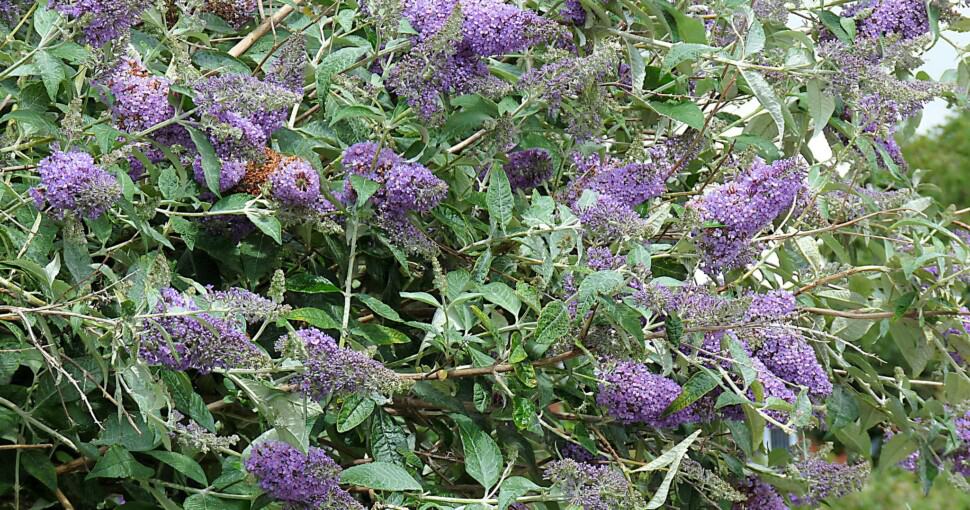The butterfly bush (Buddleja davidii) may be a beautiful plant, but it is also an invasive species in North America. This shrub grows up to twelve feet tall and has striking flower panicles in shades of white, pink, purple, yellow, and blue. Yet, despite the beauty of this plant, many fear that it threatens the environment.
Contents
- 1. Foxglove (Digitalis lamiales)
- 2. English Lavender (Lavandula angustifolia)
- 3. Panicle Hydrangeas (Hydrangea paniculata)
- 4. Virginia Sweetspire (Itea virginica)
- 5. Sweet Pepperbush (Clethra alnifolia)
- 6. Vitex (Vitex agnus-castus)
- 7. Lilac (Syringa vulgaris)
- 8. Milkweed (Asclepias Gentianales)
- 9. Douglas Spiraea (Spiraea douglasii)
As such, many people are looking for other alternatives – plants with the same striking flowers as butterfly bushes but that aren’t as invasive. Fortunately, there are many such plants. Here are nine plants that look like the butterfly bush:
- Foxglove – A Foxglove also has impressive flower pinnacles.
- English Lavender – The shape and color resemble the butterfly bush.
- Panicle Hydrangeas – The pinnacle shape and flowers look like butterfly bushes.
- Virginia Sweetspire – The flowers also grow on pinnacles that protrude from the plant.
- Sweet Pepperbush – The flowers grow in cone-shaped bundles like a butterfly bush.
- Vitex – Most parts of the plant look like a butterfly bush.
- Lilac – The flowers and how they grow resemble a butterfly bush.
- Milkweed – Milkweed flowers look like butterfly bush flowers.
- Douglas Spiraea – All parts of the plant look like butterfly bushes.
Suppose you are interested in learning about alternatives to butterfly bushes, or you have a plant in your garden that looks like one but isn’t. In that case, you might be interested to read about these eight plants that look like butterfly bushes and how they differ.
1. Foxglove (Digitalis lamiales)
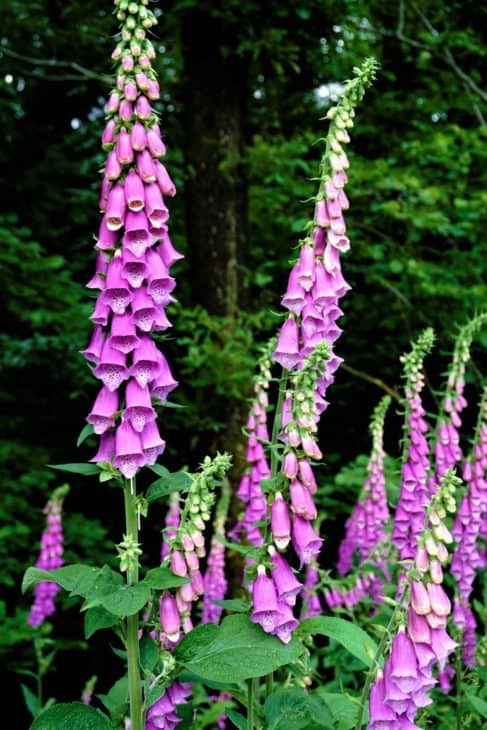
The foxglove may have bell-shaped flowers, but these flowers grow on long, cone-shaped flower stems. Foxgloves are native to Northwest Africa, Asia, and Europe. Foxglove grows up to six feet tall and produces long, cone-shaped flower spikes that protrude from the plant. This reminds one of a butterfly bush.
Foxglove plants also have long, narrow simple leaves like the butterfly bush. Foxglove flowers are white, purple, yellow, pink, and red. Despite the similarities, a Foxglove is significantly smaller than a hydrangea, and the flowers have a distinctive bell shape. These characteristics set them apart from a butterfly bush.
Like the butterfly bush, Foxgloves are considered an invasive species and a threat to the natural habitat.
2. English Lavender (Lavandula angustifolia)
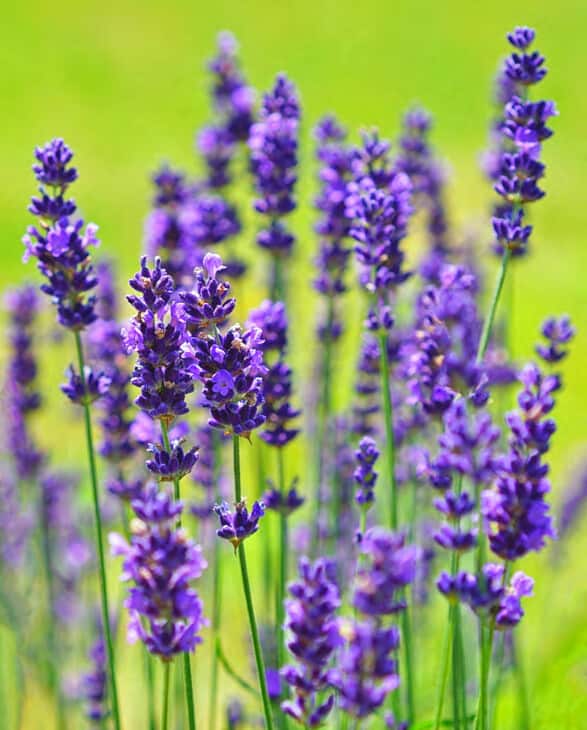
Another plant with pinnacle flower stalks is the English lavender. English lavenders have a distinctive scent, and their leaves are much smaller than butterfly bush leaves. However, their flowers are purple and grow in panicle bundles that protrude from the shrub like a butterfly bush.
The English lavender is significantly smaller than a butterfly bush, growing only between one and three feet tall. The flowers are also much smaller. And, despite the flowers growing on a panicle, the panicle isn’t as cone-shaped as a butterfly bush.
Although English lavenders aren’t originally from the USA, they aren’t considered an invasive species in the States.
3. Panicle Hydrangeas (Hydrangea paniculata)
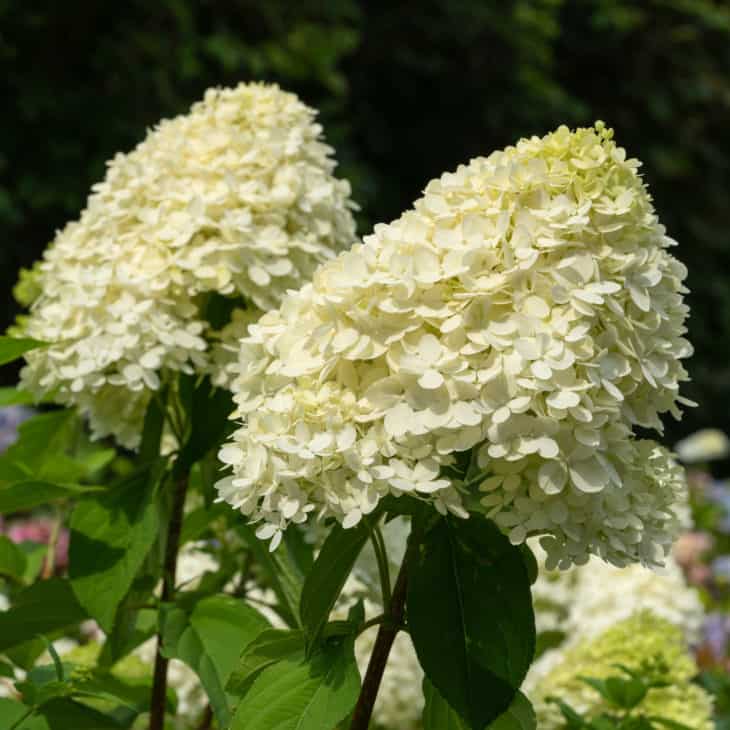
Considering the name, it should be obvious why the panicle hydrangea looks like a butterfly bush. Panicle hydrangeas grow between six and eight feet tall, making them slightly smaller than butterfly bushes. However, from the shrub, large, cone-shaped flower bundles protrude.
These flowers appear in white, pink, red, and purple. They look remarkably similar to a butterfly bush, even if the pinnacles aren’t as tall as those of a butterfly bush. Although the pinnacles remind one of a butterfly bush, the individual flowers are much larger.
Panicle hydrangeas aren’t listed as invasive plants in the USA. Still, many advise carefully monitoring your plants to keep their growth in check.
4. Virginia Sweetspire (Itea virginica)
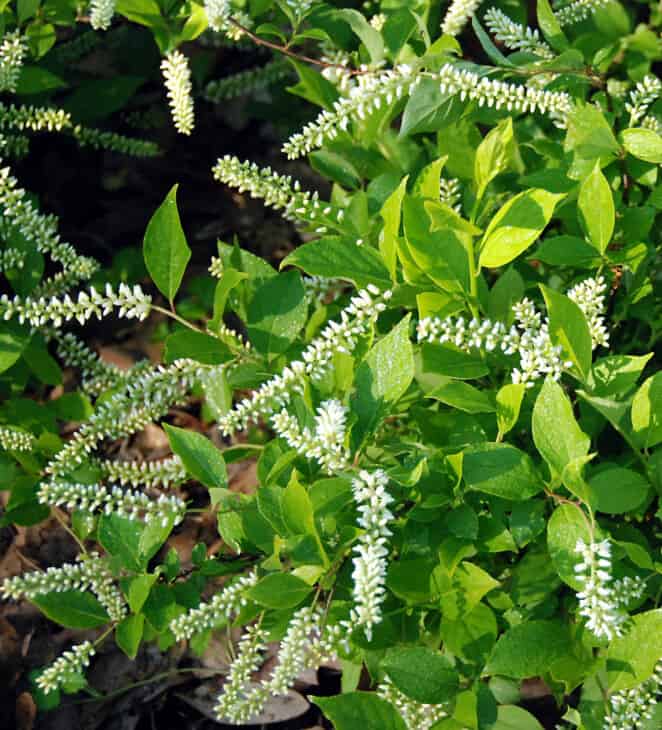
The Virginia sweetspire is another plant with panicles that look like the butterfly bush. The Virginia sweetspire is native to North America. This plant grows between three and five feet tall and has tiny, white flowers on panicles protruding from the shrub.
The white flowers and panicles resemble those of a butterfly bush, which is why people sometimes mistake one for the other. Yet the Virginia sweetspire is significantly smaller than a butterfly bush and the individual flowers also don’t look the same.
Considering that a Virginia sweetspire is native to North America, it might be an excellent alternative to a butterfly bush in your garden.
5. Sweet Pepperbush (Clethra alnifolia)
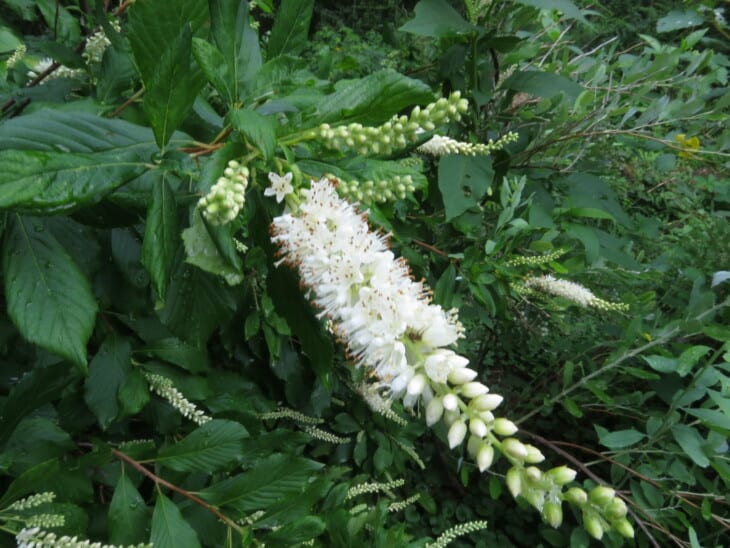
The sweet pepperbush is yet another native alternative to the butterfly bush. Also known as the summersweet, a sweet pepperbush grows between five and ten feet tall, nearly the same size as a butterfly bush. Like the butterfly bush, a sweet pepperbush also has long flower panicles in shades of pink or white.
However, the flowers on these panicles aren’t as densely packed, and one can clearly see how the individual flowers differ. The leaves of a sweet pepperbush also differ from a butterfly bush. The leaves are much larger and have serrated edges.
The sweet pepperbush is another excellent alternative to a butterfly bush when looking for a native species.
6. Vitex (Vitex agnus-castus)

Although the Vitex is technically a tree, it is often grown as a shrub that reaches twelve to fifteen feet in height, the same height as a butterfly bush. The Vitex also has long, narrow, and smooth-edged leaves that remind one of a butterfly bush.
But the thing that has most people confused about this tree is that it produces flower panicles that look almost exactly like those of a butterfly bush. The Vitex’s flowers grow in long, cone-shaped panicles. The flowers are purple and the individual flowers look like butterfly bush flowers.
Considering how closely these plants resemble each other, you’ll be happy to learn that these trees are native to the USA and therefore don’t pose any threat of becoming invasive.
7. Lilac (Syringa vulgaris)
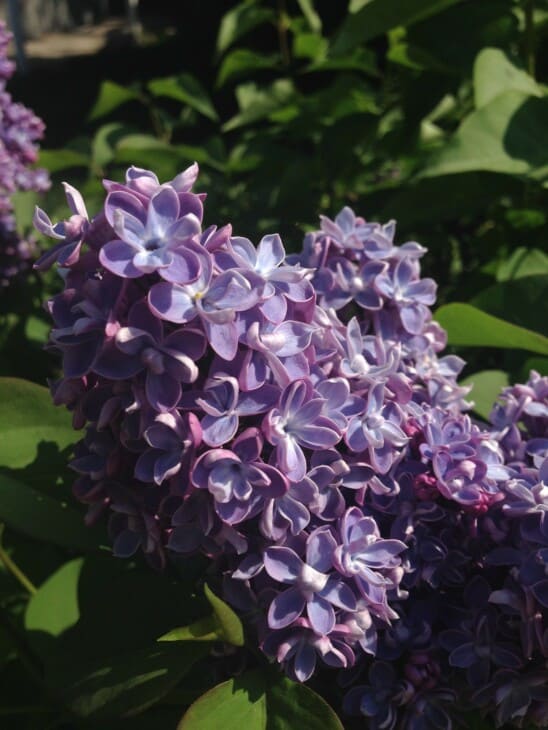
Yet another plant with flowers that reminds one of a butterfly bush is the lilac. The lilac tree (Japanese lilac tree) grows between twelve and fifteen feet tall, the same size as a butterfly bush. The flowers, which come in all shades of purple, pink, and white, grow in long, cone-shaped panicles, just like a butterfly bush.
The flowers are fragrant and have a unique scent that makes it easy to identify this plant. Although the panicles look similar, lilac flowers are much bigger than butterfly bush flowers. The leaves of a lilac tree are also larger and more rounded. Overall, the plant is a brighter shade of green.
Despite being foreign to North America, lilacs aren’t considered an invasive species, making them an excellent alternative to the butterfly bush.
Related: 23 Beautiful Types of Lilac Trees
8. Milkweed (Asclepias Gentianales)
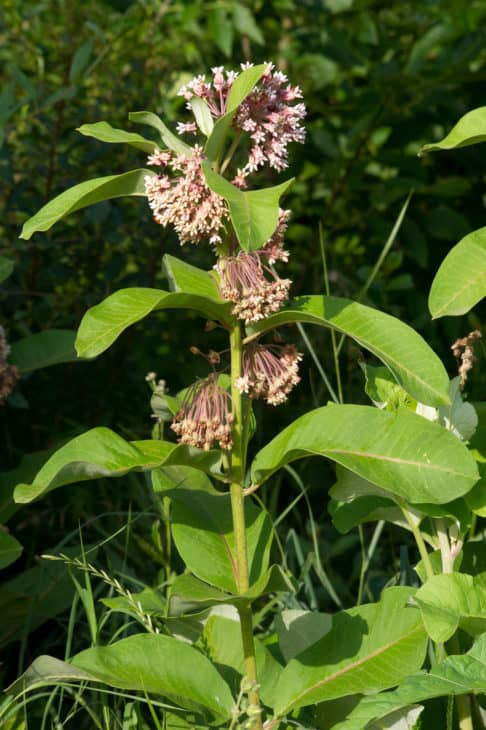
Milkweed is a plant that grows between two and five feet tall, making it a lot smaller than a butterfly bush. Milkweed is native to North America. And although the plant sometimes looks a bit weedy (as the name suggests), it produces the most beautiful flowers.
The flowers grow in bunches but aren’t panicles like butterfly bush flowers. Instead, each individual flower of some milkweed species looks like butterfly bush flowers. Milkweed flowers are tiny and delicate. They occur in shades of pink, orange, and yellow.
9. Douglas Spiraea (Spiraea douglasii)
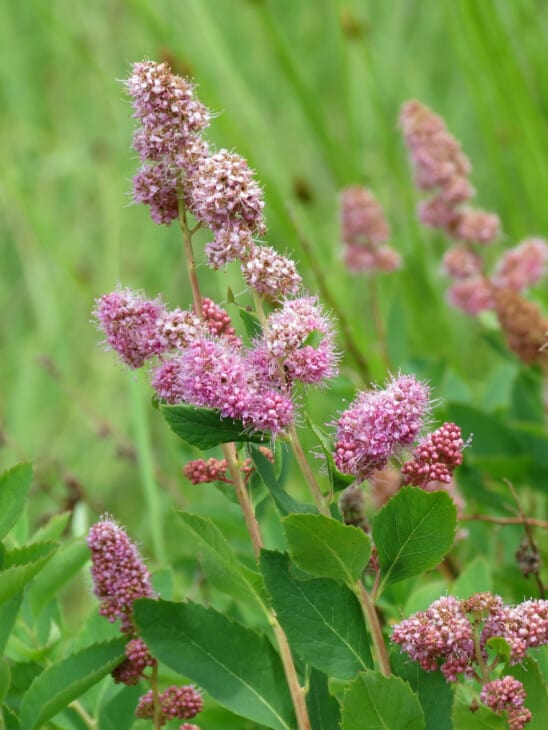
The final plant that shows some resemblance to a butterfly bush is the Douglas spiraea. Also known as a hardback or steeplebush, the Douglas spiraea grows between four and six feet tall. This shrub has long, narrow green leaves that remind one of the butterfly bush.
The Douglas spiraea also produces flower panicles in shades of pink. While the individual flowers don’t look like butterfly bush flowers, the panicles remind one of them. And, because Douglas spiraea is native to North America, it poses no threat of becoming invasive.

